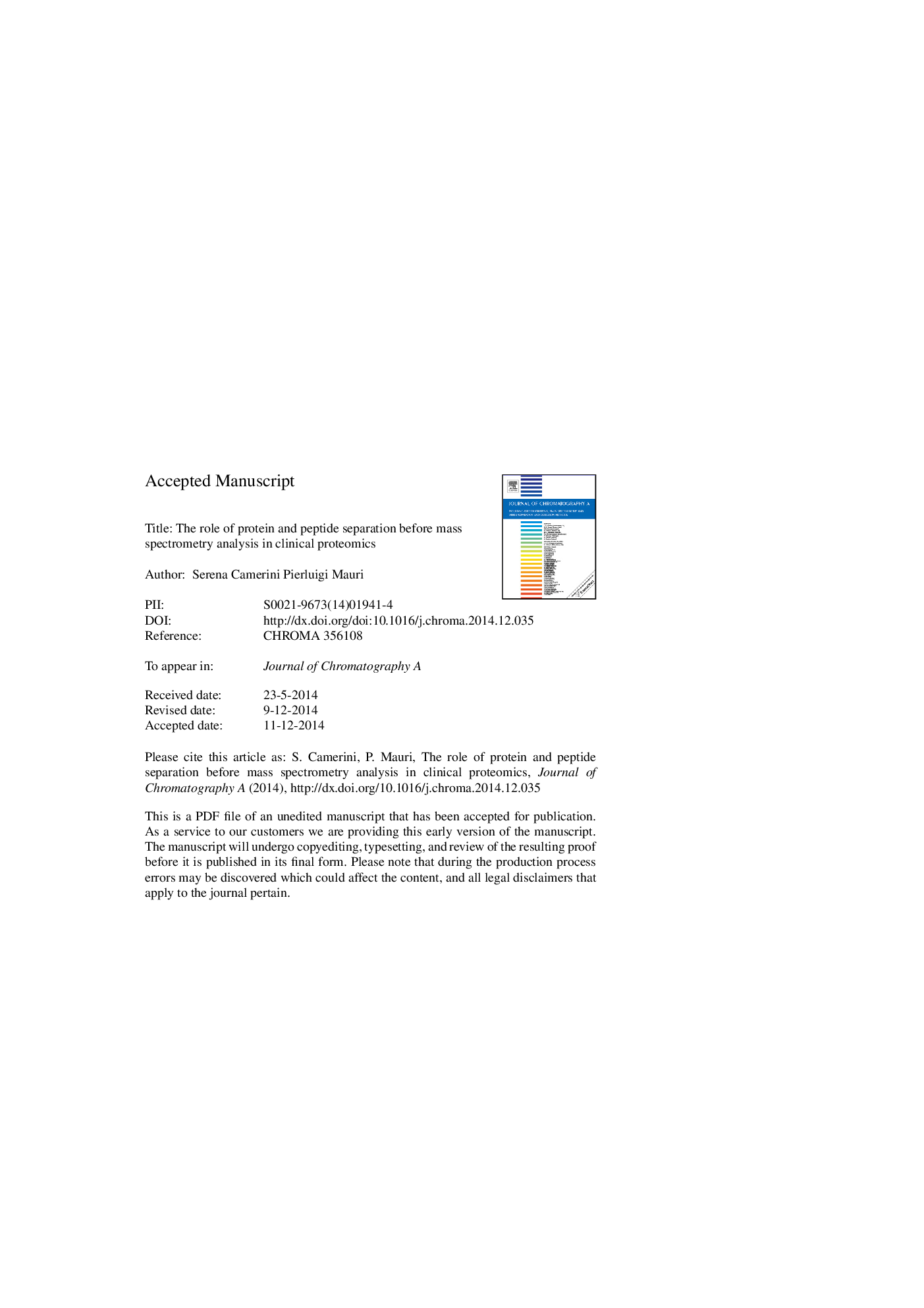| Article ID | Journal | Published Year | Pages | File Type |
|---|---|---|---|---|
| 7612005 | Journal of Chromatography A | 2015 | 27 Pages |
Abstract
The purpose of clinical proteomics is to characterise protein profiles of a plethora of diseases with the aim of finding specific biomarkers. These are particularly valuable for early diagnosis, and represent key molecules suitable to elucidate pathogenic mechanisms. Samples deriving from patients (i.e. blood, urine, cerebrospinal fluid, biopsies) are the sources for clinical proteomics. Due to the complexity of the extracted samples their direct analysis is unachievable. Any analytical clinical proteomics study should start with the choice of the optimal combination of strategies with respect to both sample preparations and MS approaches. Protein or peptide fractionation (off-line or on-line) is essential to reduce complexity of biological samples and to achieve the most complete and reproducible analysis. The aim of this review is to introduce the readers to a functional range of strategies to help scientists in their proteomics set up. In particular, the separation approaches of proteins or peptides (both gel-based and gel-free) are reviewed with special attention paid to their advantages and limitations, and to the different liquid chromatography techniques used to peptide fractionation after protein enzymatic digestion and before their detection. Finally, the role of mass spectrometry (MS) for protein identification and quantification is discussed including emerging MS data acquisition strategies.
Related Topics
Physical Sciences and Engineering
Chemistry
Analytical Chemistry
Authors
Serena Camerini, Pierluigi Mauri,
